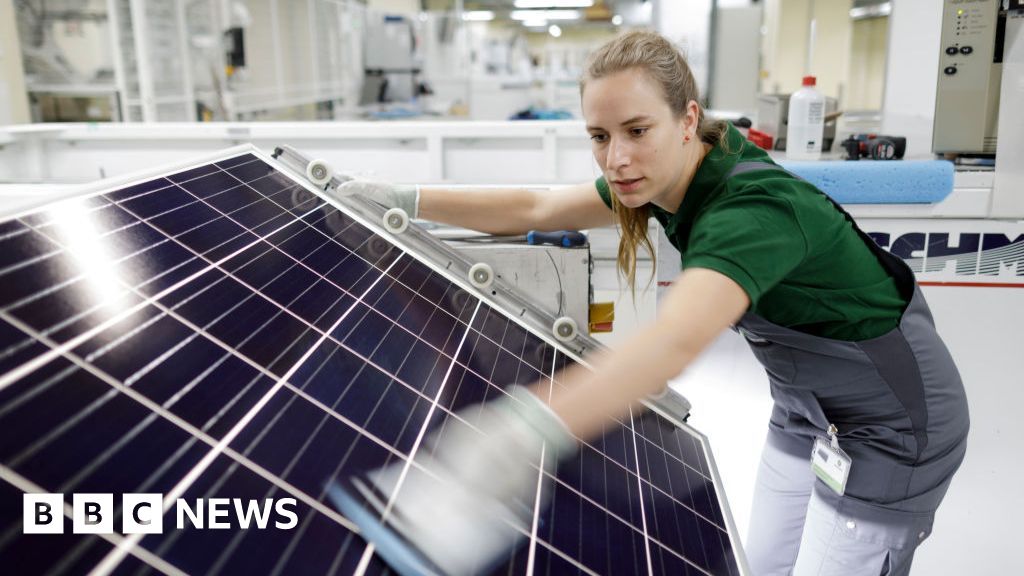In 1746 English pharmacist William Cookworthy helped fend off Chinese porcelain imports by discovering the world’s best clay deposits in Cornwall.
Three centuries later, the region in south-west England is trying to revive its decaying mining sector to protect the UK against Chinese imports of another crucial item: lithium.
The hope is that Cornwall, better known for its beaches and surfing, becomes a hub in the UK production of a key ingredient in the electric car revolution. But in the “Cornish Alps”, angular mountains formed by clay mining waste, success rests on a handful of developers battling to secure capital.
Spearheading the charge are Cornish Lithium, a mineral exploration start-up in the throes of raising a large financing package, and Imerys British Lithium, a £575mn joint project between French clay miner Imerys and extraction group British Lithium.
Both groups face an arduous road to secure financing and deliver commercially unproven technologies to extract lithium from the ground to produce chemical compounds that go into EV batteries.
However, if successful, the rewards could be big. “It’s like standing in the stone age looking at the bronze age coming,” said Jeremy Wrathall, chief executive of Cornish Lithium.
He believes the “granite kingdom”, as Cornwall is known, can play a part in this switch with a potential to become a national lithium centre and a link in Europe’s electric car supply chain.
“Mining is in Cornwall’s DNA,” Wrathall said, speaking from a disused clay processing site that the company plans to turn into a lithium plant.
“It’s not just a programme or project,” added Andrew Smith, director of British Lithium. “It’s an industry being born in the UK.”
Although Cornwall would not produce anything near the supply of the world’s largest lithium producers in Australia, Chile and China, it has relative advantages, according to Wrathall.
It has a homogenous resource, with lithium evenly spread in the rock. It can rely on local communities familiar with mining, direct access to the granite with the clay layer already removed through previous extraction and existing infrastructure.
This includes railways and disused processing plants to help reduce transport costs and avoid planning red tape.
“If there’s lithium here and there’s a history of mining, why would we not look at it?” Wrathall said.


Cornish Lithium and Imerys British Lithium aim to extract lithium from mica, a sparkly mineral found in the granite beneath clay layers, before making its way to plants nearby to produce battery-grade lithium.
It would differ from the two main current extraction methods, which consist of evaporating brines in Chile, and crushing up hard rock from Australia containing a mineral called spodumene for processing in China.
Cornish Lithium believes its $244mn project can generate about 7,000 tonnes of lithium carbonate equivalent (LCE) a year from late 2026. Imerys British Lithium aims to produce 20,000 tonnes from 2028.
It would only play a small role in meeting the global demand, forecast to rise to 3.7mn tonnes by 2030 by Albemarle, the world’s biggest lithium producer. But it would partially cover the UK’s electric car needs of 80,000 tonnes, according to the UK Critical Minerals Intelligence Centre.

The Cornish mica method could be less carbon intensive than others. Lithium can be separated without heating the ore to more than 1,000C, as has to be done to the hard Australian rocks. The Chilean brines generate low emissions but there are concerns over water availability.
Mica-based lithium could cost more to produce than Australia’s hard rock method, which generates close to half of the world’s supply, because of a smaller concentration of lithium in the rock. It is also lower grade than the Chilean brines.
But Wrathall insists the Cornish technique has potential, pointing out that Chinese battery manufacturer CATL is also developing a mica-based project in the Jianxiawo area.
“The Chinese are the best metallurgical innovators on the planet,” Wrathall said. “They’re going to mine lithium mica, which tells you that it’s actually quite a smart thing to be doing.”
Wrathall’s company also has ambitions to extract lithium from geothermal waters rich in minerals flowing through cracks in non-permeable granite near the village of Blackwater.
This gives Wrathall’s business another extraction method by using the oil and gas industry’s drilling and fluid pumping techniques rather than traditional mining ones.
However, as with the mica method, separating the lithium out of water using filters, beads and membranes is an unproven technology at commercial scale.
“Technology in all cases in Cornwall is different. It’s always a big research and innovation project to open any mine,” said Frances Wall, professor at Cambourne School of Mining. “This is that and more.”
The untested nature of the extraction might prove problematic for fundraising, especially with lithium prices slumping 44 per cent to $42,000 per tonne this year after China slashed subsidies on electric cars.
Analysts say that state support for mining projects might stay minimal under a Conservative government. Each Cornish project has received under £10mn in public grants.
By contrast, France has put together a €2bn public-private critical minerals fund and the US has provided $1.4bn of grants to eight lithium supply chain projects covering nearly 40 per cent of total development costs.


“The technologies are relatively risky, so a private enterprise alone will struggle to stand alone,” said Alessandro Dazza, Imerys chief executive.
However, five active drills across Cornish Lithium’s sites suggest no imminent cash crunch, after auditors warned it would need £10mn by the end of this month to sustain operations.
Brian Menell, chief executive of Ireland-based TechMet, Cornish Lithium’s largest shareholder, said the company is working to secure funds for its feasibility study.
“We’re at an advanced stage in concluding a big funding structure,” he said. “Cornwall will grow to be a big producer of lithium battery chemicals over the next five years.”
Credit: Source link











